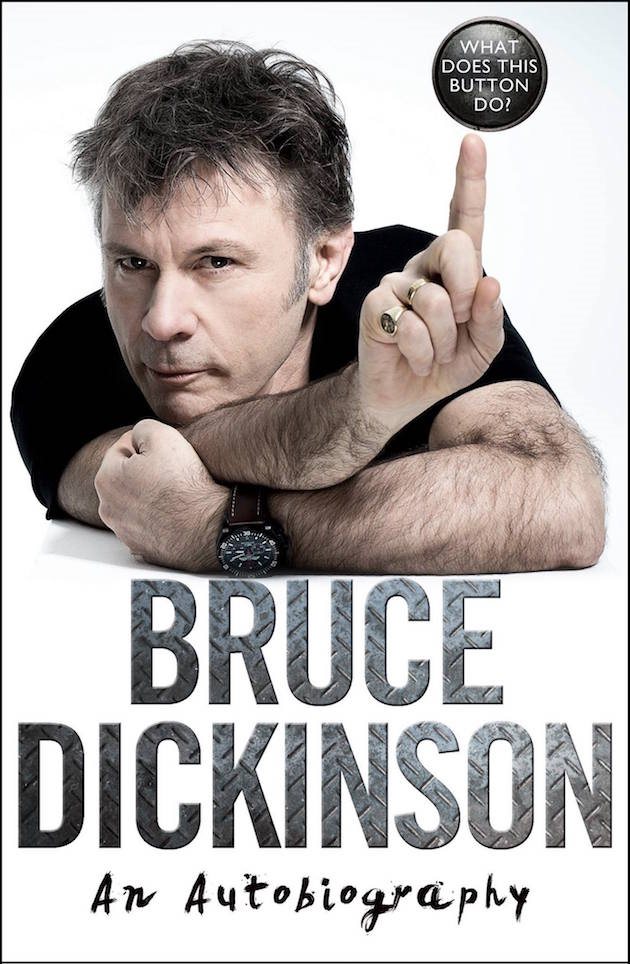IRON MAIDEN singer Bruce Dickinson has disputed the stereotype that heavy metal music appeals mostly to alienated working-class males, saying that he doesn't think "you can allocate any style of music to a particular class." During a brand new interview with The Irish Times focusing on his recently released autobiography, "What Does This Button Do?", Bruce spoke about the fact that he went to Oundle, a prestigious English boarding school. When the interviewer pointed out to Dickinson that boarding schools are regarded in the U.K. as a very middle-class thing while heavy metal is thought of predominantly as a working-class genre, the singer responded: "I'm not too sure about that. I'm not sure you can allocate any style of music to a particular class. You would imagine that punk was terribly working class, but it was actually quite full of quite posh people at the top end of a lot of punk bands. At the top of a lot of punk bands were a bunch of middle-class or aristocratic anarchists. It had also had its fair share of working-class people as well. "I'm not one to start class warfare in music," he continued. "Class warfare is one thing that I would be extremely eager to avoid in any way shape or form because it is bollocks. People are people. Where they come from and their backgrounds are very varied. Money shouldn't or doesn't enter into it unless people want it to." In his book, Dickinson wrote about being bullied and being "pretty fucking angry" in his time at Oundle. "Everybody says they [boarding schools] have changed," Bruce told The Irish Times. "I don't know. One of my kids went to a boarding school and I went down there myself and took him out of it. To the best of my observation, it hasn't really changed one bit. He was having a miserable time and I said to him, 'Come on, we're out of there.' And he asked, 'Do we not need to ask for permission?' and I said, 'No, I'm your dad.' [Laughs]" Asked what it was about his son's boarding school that he didn't like, Bruce said: "It was all the usual suspects. Actually, he did go to a semi-boarding school subsequent to that, a few years later. It was actually quite reasonable. One of the big things that was reasonable about it was that it was 50:50 (boys: girls) and that makes a huge difference to the dynamic. Some people handle it differently. Some people crack up. It's a bit like post traumatic stress disorder (PTSD). You are in effect in a hostage situation or in jail. It's like a prisoner of war camp for adolescents. [Laughs]" Back in 2014, a study from City Lab and the Martin Prosperity Institute noted an interesting association between a country's socioeconomic status and number of metal groups. Based on a map released back in 2012, which tracked the number of heavy metal bands per 100,000 residents, the study found that while the genre "holds less sway in the ravaged postindustrial places of its birth" — like America and the U.K. — it "remains insanely popular in Scandinavian countries known for their relative wealth, robust social safety nets, and incredibly high quality of life." Richard Florida and his Martin Prosperity Institute colleague Charlotta Mellander found that Scandinavia's love for heavy metal bands is directly related to the government's efforts to put compulsory music training in schools. "While new musical forms may spring from disadvantaged, disgruntled, or marginalized groups," Florida wrote, "it is the most advanced and wealthy societies that have the media and entertainment companies that can propagate new sounds and genres, as well as the affluent young consumers with plenty of leisure time who can buy it." As previously reported, "What Does This Button Do?", landed at No. 10 on the New York Times "Hardcover Nonfiction" best sellers list. It was released in the U.S. on October 31 via Dey Street Books (formerly It Books), an imprint of HarperCollins Publishers.

Continue reading...

Continue reading...

